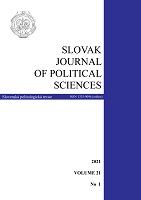What Do We Need to Resolve after Establishing the European Public Prosecutor’s Office in the Slovak Republic?
What Do We Need to Resolve after Establishing the European Public Prosecutor’s Office in the Slovak Republic?
Author(s): Miloš Deset, Libor KlimekSubject(s): Criminal Law, International Law, Politics and law, EU-Legislation
Published by: Univerzita sv. Cyrila a Metoda v Trnave, Katedra politológie
Keywords: European Public Prosecutor’s Office (EPPO); Implementation at national level; Functioning at national level; Law enforcement authority; Mutual recognition;
Summary/Abstract: Establishment of the European Public Prosecutor’s Office is a result of the European Union’s initiatives as a consequence of the fraud against its financial interests. Many questions beg consideration at the EU level as well as at national level of all EU Member States, including the Slovak Republic. The aim of the paper is the assessment of Slovak understanding of the European Public Prosecutor’s Office. The article’s focus comprises five crucial issues that need to be resolved in Slovakia. The first section points out at the process of adoption and implementation of the European Public Prosecutor’s Office. Consequently, the following section tackles with the question whether the European Public Prosecutor’s Office could be considered a law enforcement authority at national level. The third section is focused on number of the European delegated prosecutors and related competence and jurisdiction. While the fourth section is focused on the execution of evidence in criminal proceedings, the fifth section is focused on application of mutual recognition. At the outset of the contribution, the historical method of research was used, namely in regard to the genesis of the EPPO. The most frequently used method was the analytical method of research. This method was used in regard to the analyses and assessments of literary sources, legislation and implementation of electronic monitoring. Another frequently used method was the comparative method of research. Further, the synthetic method of research was used. Information gathered in order to elaborate the contribution was collected in particular through the three following gathering techniques. The first data gathering method was the review of scientific literature; the works of renowned authors was analysed. The second data gathering method was access to legislation. It should be highlighted that not only consolidated legislation was used, but also original versions were analysed, in particular in the case of historical issues. Third, research into official documents of European organisations was conducted, in particular documents of the European Union.
Journal: Slovenská politologická revue
- Issue Year: 21/2021
- Issue No: 1
- Page Range: 79-94
- Page Count: 16
- Language: English

